Welcome to the third article about Windows storage spaces. Today I describe how to delete the Storage Spaces of Windows 10 and beyond. Before I delete storage, I do two more experiments on virtual drives:

- I think two virtual drives in the same storage space;
- I imposed a virtual drive with capacity greater than the hard disk pool.
Experiments are always carried out in mirroring 2-way, useful setting to mirror files on two hard drives in real time, reducing the chances of losing data in the event of a physical disk failure.
For those who had lost them, here are the links of the previous articles:
- Windows 10 Storage Spaces, mirroring to protect data (This article explains how to create a mirrored storage space);
- Archive spaceszWindows 10 ion, performance and simulation of a failure.
Mirrored virtual drive, with a capacity greater than that of the hard disk pool
By creating a 2-way mirrored virtual drive, I was amazed that it was possible to set a capacity higher than that of the smaller hard disk that makes up the pool. In case of mirroring, the ideal would be to install two hard drives of the same capacity and similar performance. In the case of the experiment described in this article, I used two different hard drives. The smaller capacity hard disk is 250GB (equal to 231GB useful), and this is the capacity I set, at least initially, for the virtual drive. In fact, since the data is mirrored, in an identical way, on two physical hard disks, the capacity of the virtual drive is limited by that of the smaller hard disk.
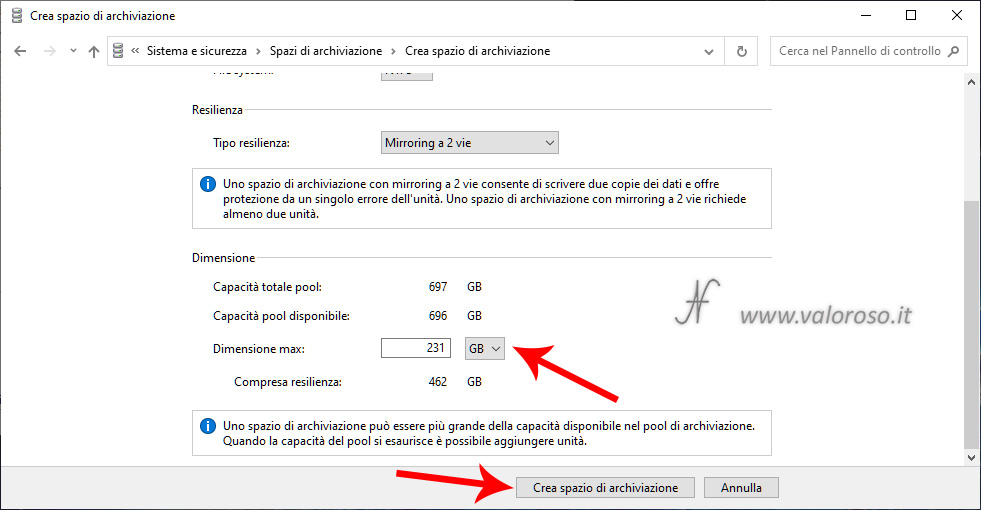
But what happens if you set a capacity greater than the theoretical one? Windows already suggests the answer, in the appropriate information pane. I then tried to set 1000GB, instead of 231GB. For the exact procedure of how to get to this screen, I invite you to read the first article related to storage spaces.

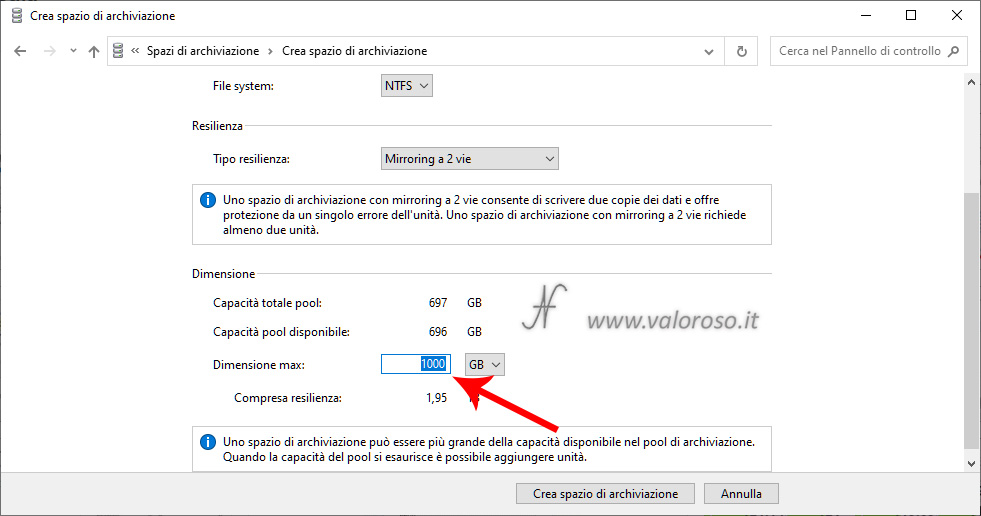
Even if you set up a virtual drive that is larger than you can, Windows remains unmoved! The drive (to which I assigned the letter T) is created and the space is also available in the disk properties.
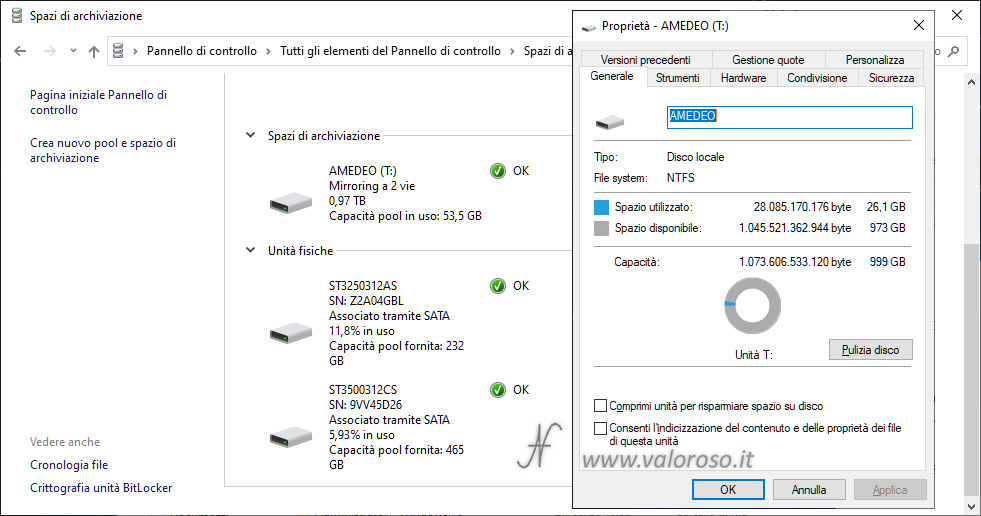
Obviously, the available space in the virtual drive of the storage space cannot be created out of thin air. Trying to fill the virtual drive T with some files, the capacity can not exceed the theoretical hardware limits, in this case 231GB.
Some errors appear: both when copying files, and in the notification area. Windows asks you to add some hard drives, to reach the desired capacity. Being a 2-way mirrored virtual drive, we will have to add twice as many hard drives as necessary to reach the desired capacity.
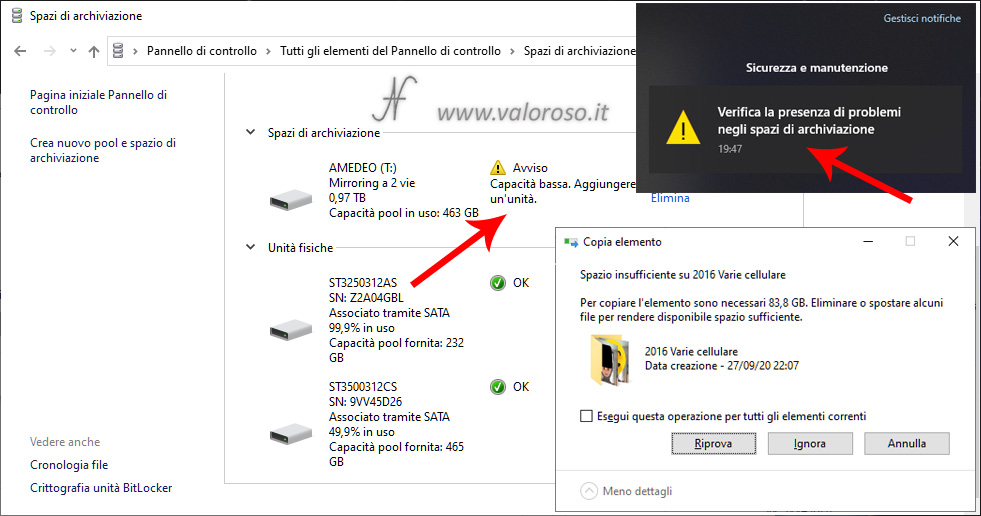
Two virtual drives (2-way mirrored) in the same Windows 10 Storage
Another experiment I carried out, before proceeding with the elimination of the Windows 10 Storage Spaces, is to create two virtual drives (2-way mirrored) in the same storage space.

Again, the sum of the capacities of the two virtual drives must not exceed the maximum allowed by the hardware, in this case 231GB. As already seen in the previous paragraph, Windows still allows you to set larger capacities, but still an error would be shown when filling the smaller hard disk.
As already seen above, from the Control Panel, System and security, Storage spaces, the storage pool must first be created, which, in this case, includes the two SATA hard drives of 250GB and 500GB. Next, you have to create the first storage space, by clicking on Create storage space.
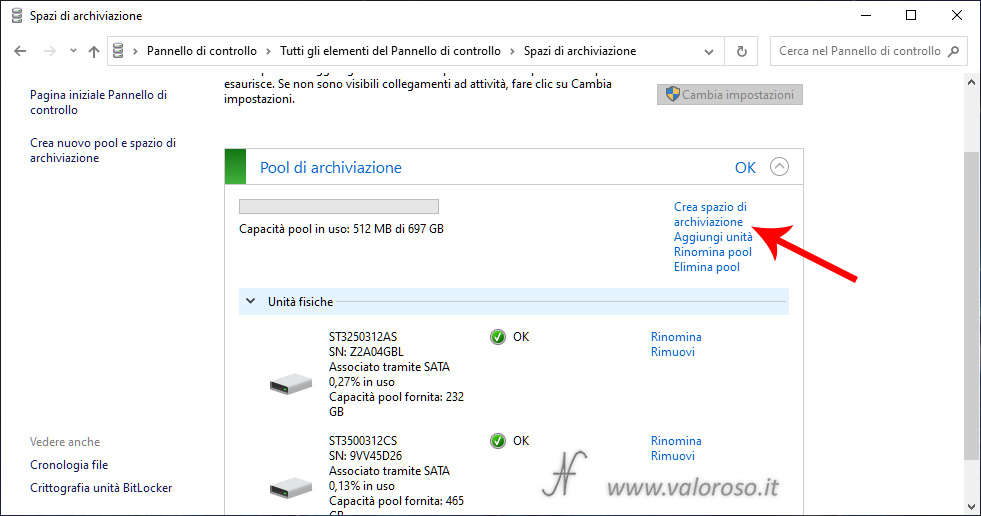
You have to set the first virtual drive, to which I assigned the letter T and a capacity of 100GB. To increase data resiliency (i.e. protection in case of failures), I selected the Mirroring a 2 vie.
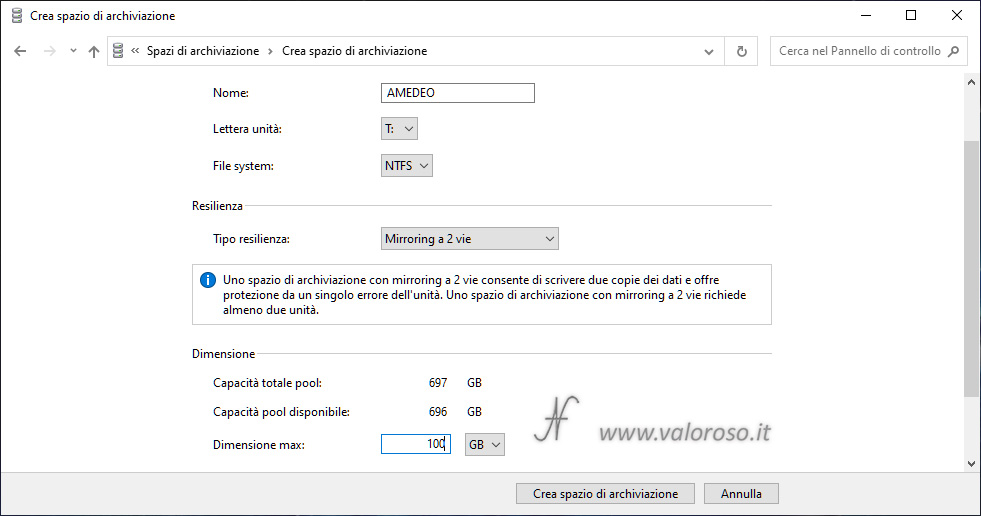
Subsequently, repeating the operation described above, I set the second virtual drive, to which I assigned the letter U and a capacity of 130GB.

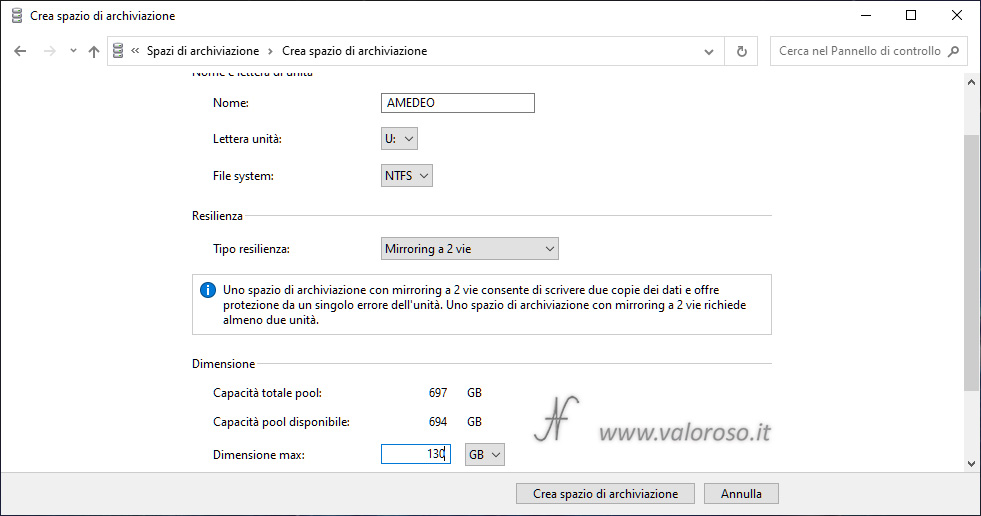
after you create the two virtual drives they are visible both between the Storage spaces, and also in Disk management, as if they were two normal hard drives. Being in mirroring, we already know that the files will be saved identical, on two hard drives, in real time.
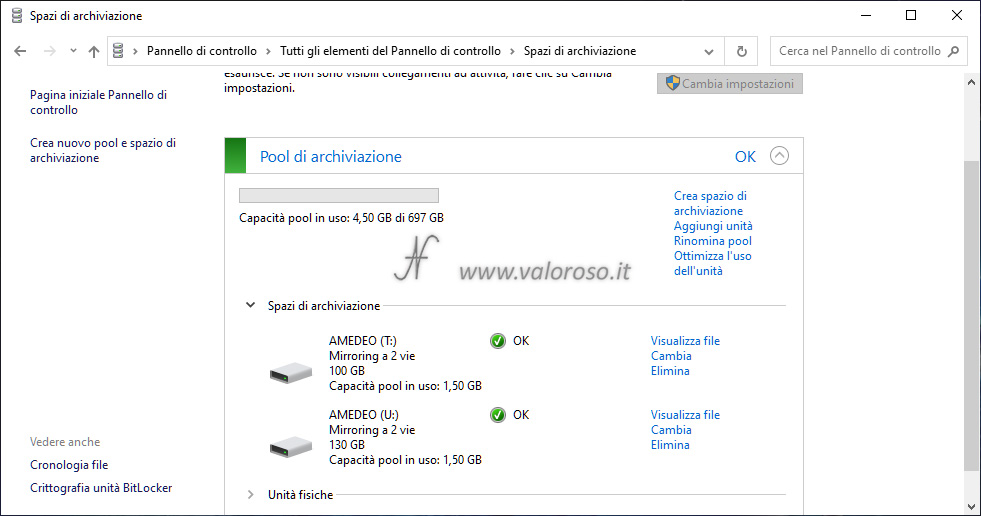
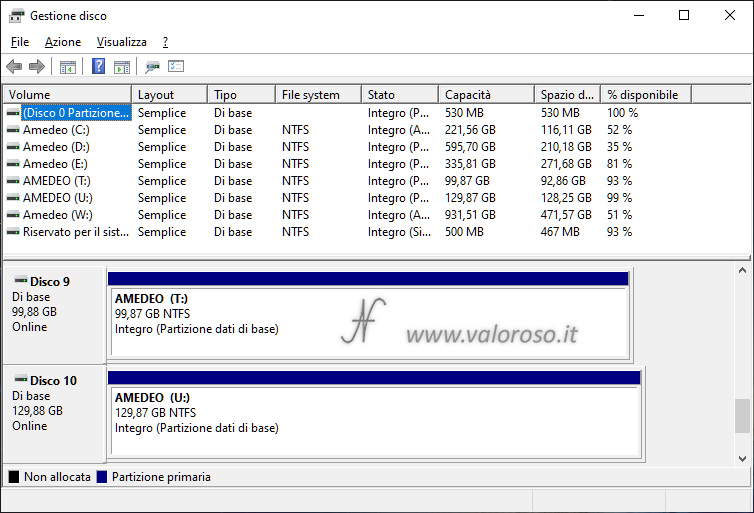
Repeating the experiment carried out in the previous article, simulating a failure, I tried to move one of the two hard disks of the pool to a second computer, always with Windows 10 operating system. The hard disk is visible and the data of the two virtual drives are also accessible from the second computer.
Deleting Windows 10 Storage Spaces
In order to be able to use the hard drives as singles again, you need to proceed with the elimination of Windows 10 storage spaces.
Any data that may be present in the virtual drives will be erased!
It is therefore necessary to enter from Control Panel, System and security, Storage spaces. Click Change settings (Administrator privileges required.)
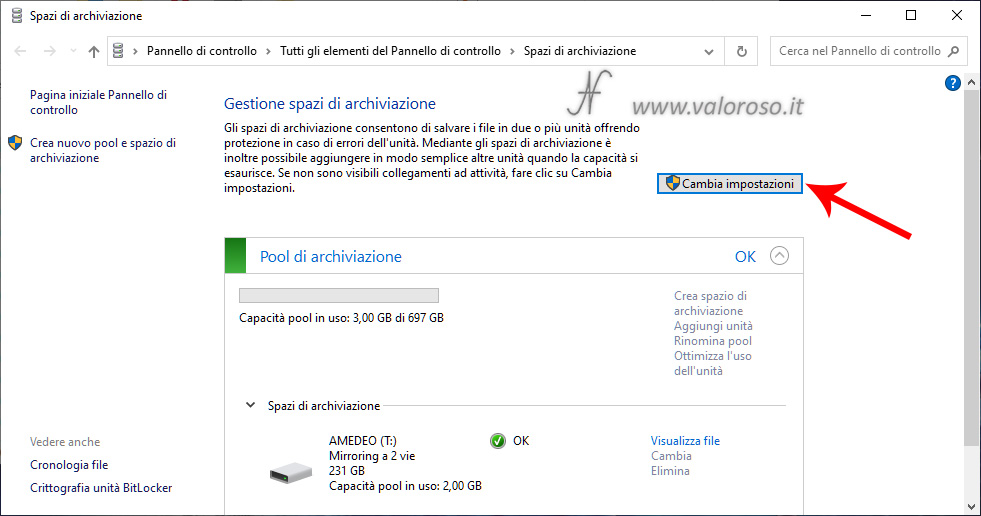
You must first delete the storage spaces (virtual drives). In this case, there is only one virtual drive, but if they were more, it would be necessary to remove them one by one. From the window Storage space management, expand the Storage spaces for the pool you want to delete, then click Remove.
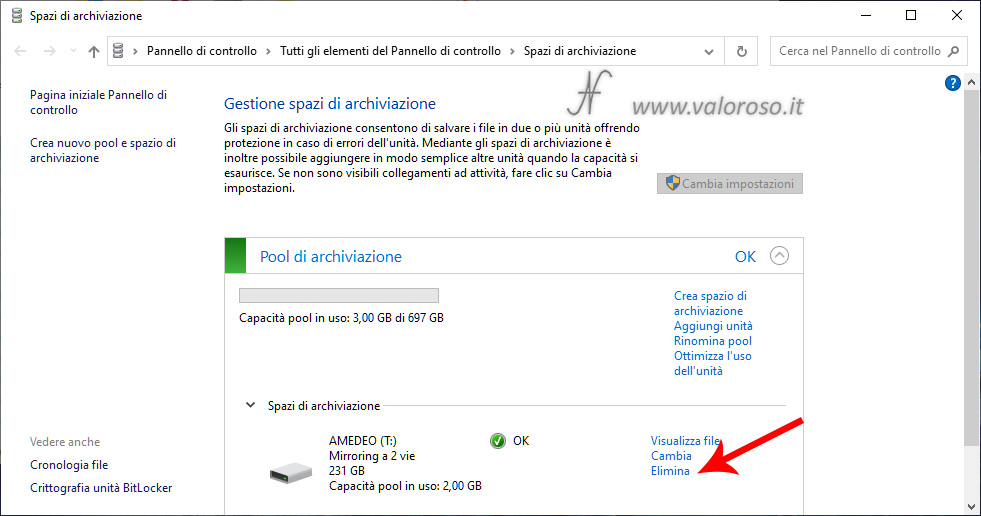
Confirm the deletion of Windows 10 storage spaces by clicking Eliminate storage space.
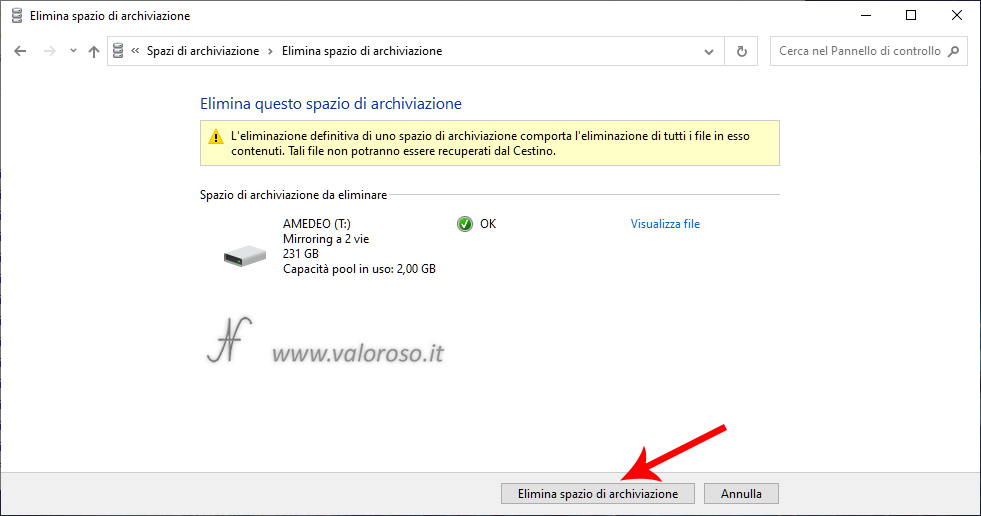
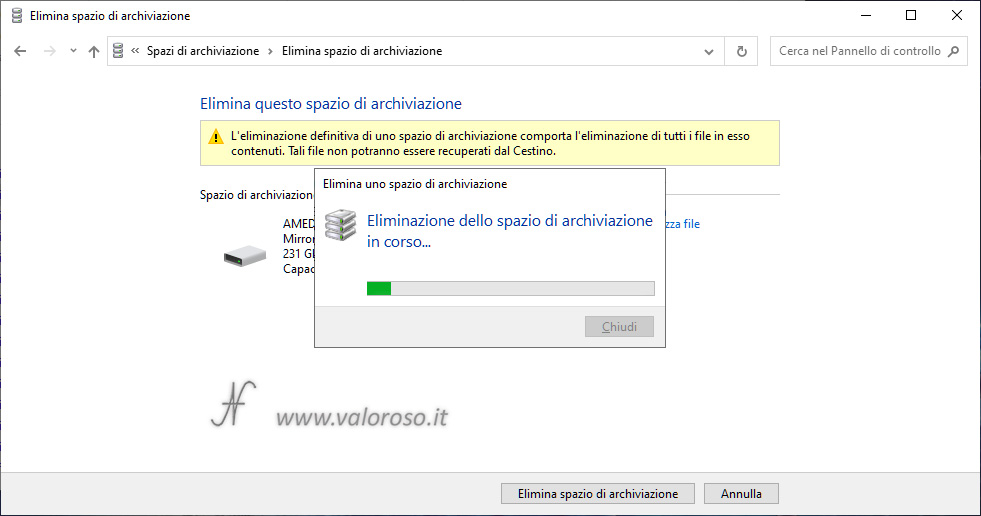
Only after removing all the virtual drives, you can proceed to remove the storage pool (the group of hard disks or SSDs). Then click on Eliminate pool, in the window Storage space management, then confirm again Eliminate pool.
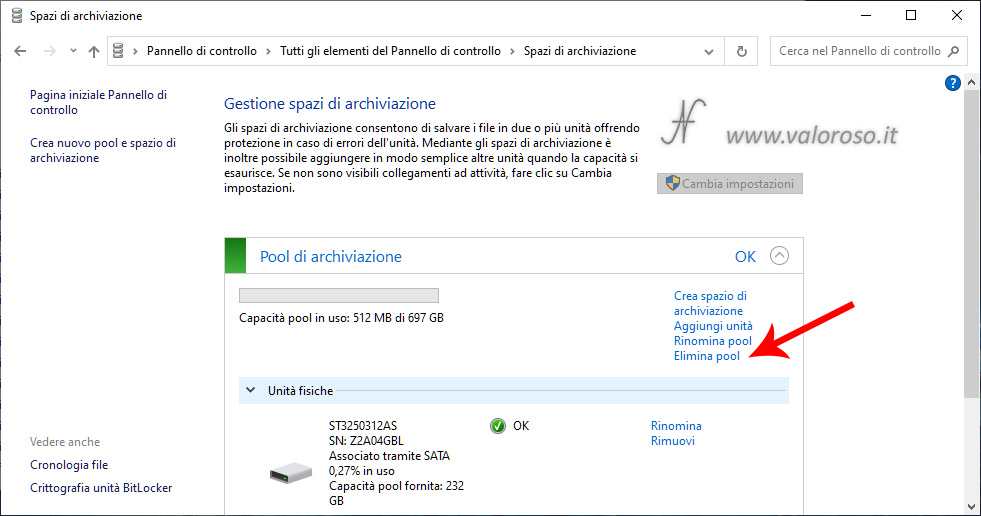
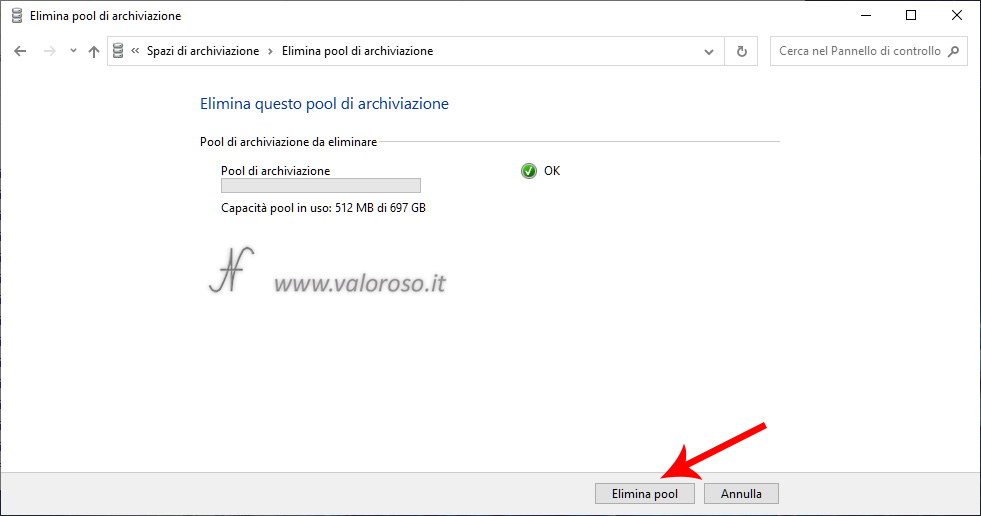
At this point, the hard disks, which made up the storage pool, will again be free and empty.
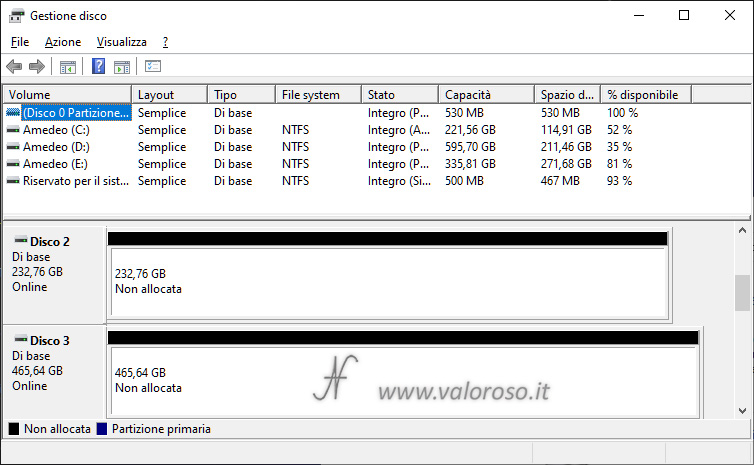
Further developments
The experiments on storage spaces are not finished yet! Inlast article of the series I have:
- created a simple storage space (a virtual drive with a capacity equal to the sum of those of the hard disks that compose it);
- moved storage space from one computer to another.
Simple storage spaces, unlike mirrored storage spaces, do not increase data resiliency.
